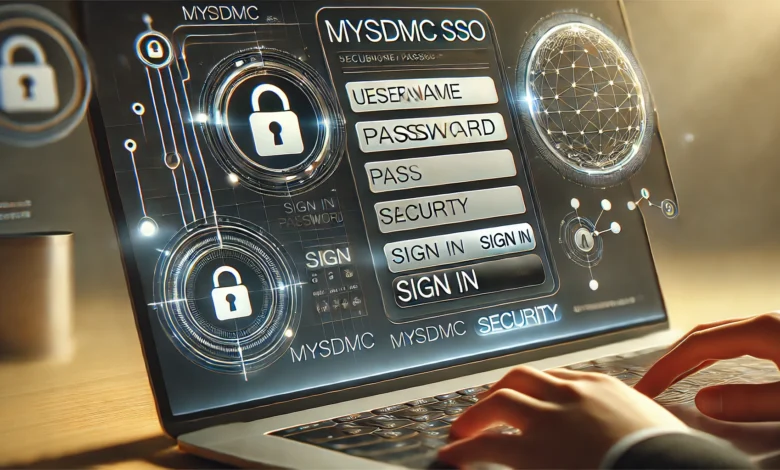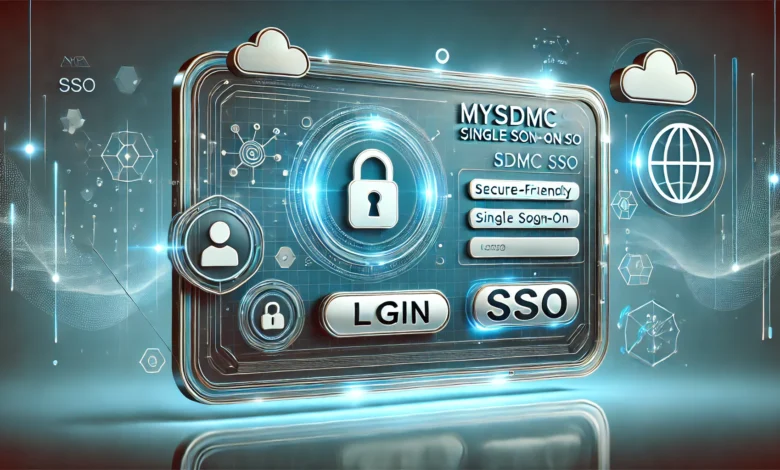
What is MYSDMC SSO?
MYSDMC SSO, an acronym for Multi-User System Development Management Center Single Sign-On, represents a significant innovation in user access management within organizations. The primary purpose of MYSDMC SSO is to provide users with a seamless authentication experience, allowing them to access multiple applications and resources using a single set of credentials. This Single Sign-On (SSO) technology simplifies the login process, effectively removing the need for users to remember and input multiple usernames and passwords for different systems.
The technology underpinning MYSDMC SSO operates on a centralized authentication framework. When a user logs in through MYSDMC SSO, the system verifies their identity and subsequently generates an authentication token. This token is then utilized to access various affiliated applications, thereby streamlining the user experience. As a result, users can navigate between different platforms effortlessly, which enhances productivity and reduces the friction associated with traditional authentication methods.
In addition to convenience, MYSDMC SSO offers substantial benefits in terms of security. By centralizing user credentials, it minimizes the risk associated with password fatigue, where users might resort to weaker passwords or reuse them across multiple platforms. Moreover, this centralized system allows for more efficient monitoring of access attempts, which is crucial in identifying and mitigating potential security threats. Implementing MYSDMC SSO thus bolsters the overall security posture of an organization, making it more resilient against unauthorized access.
Overall, MYSDMC SSO exemplifies how integrating advanced authentication technology can significantly enhance user experience while simultaneously strengthening security measures. By simplifying access to resources and minimizing potential vulnerabilities, MYSDMC SSO stands as a critical resource in today’s digital landscape.
How to Access and Use MYSDMC SSO
Accessing MYSDMC SSO is a straightforward process designed to enable users to efficiently connect to a variety of resources. To begin, users need to navigate to the official MYSDMC SSO webpage. Once there, they will find a prompt to enter their credentials. Typically, this involves inputting a designated username and password provided by the system administrator or educational institution.
After entering the required credentials, it is essential to click on the “Login” button to proceed. In case of forgotten passwords, a password recovery option is usually available, which guides users through the steps of resetting their passwords via registered email addresses or security questions associated with their accounts. This process ensures that users can regain access without much hassle.
Once logged in, users will be greeted by an intuitive user interface. The navigation panel is typically located on the left side, displaying various resources such as educational materials, administrative tools, and personal profile settings. Users can easily explore these sections to find the information they need or complete various tasks with minimal confusion.
However, there may be instances where users face login issues. Common troubleshooting tips include checking for typographical errors in usernames or passwords, ensuring that the Caps Lock key is not engaged, and confirming that the internet connection is stable. Clearing cookies and cache from the browser may also resolve access difficulties. Users experiencing prolonged issues are advised to contact technical support for further assistance.
Understanding how to efficiently access and utilize MYSDMC SSO is vital for maximizing its benefits, as it streamlines access to essential resources. With these guidelines, users can navigate the platform with confidence and ease.

Benefits of Using MYSDMC SSO
Implementing MYSDMC Single Sign-On (SSO) provides notable advantages for both users and administrators. A primary benefit of MYSDMC SSO is the significant enhancement of user experience. By allowing users to access multiple applications with a single set of credentials, the system effectively reduces the cognitive load of remembering numerous passwords. This streamlined access not only contributes to a more efficient process but also minimizes the frustrations often associated with forgotten passwords and the subsequent need for resets, allowing users to focus more on their work rather than on login issues.
From a security perspective, MYSDMC SSO presents substantial improvements. The reduced number of passwords decreases the likelihood of password-related breaches, as fewer credentials must be managed and secured. Additionally, centralized authentication allows for better monitoring and control of user access, further safeguarding sensitive information. This consolidation of access points helps organizations mitigate risks often posed by weak or reused passwords, thereby enhancing overall security posture.
Furthermore, the administrative advantages of adopting MYSDMC SSO cannot be overlooked. User management becomes considerably easier as the system allows administrators to control access rights efficiently within a single interface. This streamlined approach not only simplifies the onboarding and offboarding processes but also contributes to a reduction in administrative workload by lessening the time spent on managing user accounts and password-related support requests. Thus, organizations can allocate their resources toward more strategic initiatives rather than addressing routine access management tasks.
In conclusion, the benefits of utilizing MYSDMC SSO are numerous, spanning improvements in user experience, enhanced security measures, and simplified administration. As organizations look to optimize their access management strategies, adopting MYSDMC SSO emerges as a prudent investment that can yield significant returns.
Future of MYSDMC SSO: Trends and Developments
The future of Single Sign-On (SSO) technology, particularly in the context of MYSDMC, promises a range of exciting developments that will enhance both user experience and security. As digital landscapes continue to evolve, institutions are increasingly exploring advanced SSO functionalities to meet the demands of their users. One significant trend is the integration of multifactor authentication (MFA), which adds an extra layer of security by requiring users to verify their identity through multiple means. This is essential in an age where data breaches are becoming more sophisticated, and the need for robust security measures is paramount.
The integration of MFA within MYSDMC SSO could provide users with a more secure authentication process, mitigating the risks associated with password-only access. As cybersecurity threats grow in complexity, it is crucial for SSO systems to evolve accordingly. Enhancements in biometrics, such as fingerprint and facial recognition technology, may also see wider adoption, offering users seamless and secure access to resources while minimizing the risk of unauthorized access.
Furthermore, the implications of cloud computing on SSO systems cannot be overlooked. As more organizations migrate their resources to the cloud, the need for cohesive SSO solutions that function across multiple platforms becomes increasingly important. MYSDMC is likely to adapt its SSO framework to accommodate this shift, ensuring that users can access resources from various devices and locations with ease. This adaptability will not only improve usability but also foster a more integrated digital environment.
As we look toward the future, it is clear that MYSDMC SSO will prioritize user needs while addressing security challenges. Enhanced features, such as advanced authentication methods and improved integration with cloud services, will be at the forefront of these developments. Consequently, users can expect a more secure and user-friendly experience in the coming years.






